Cookie Para Mi
The Galapagos Islands were created around 4 million years ago through random volcanic and weather events and fortuitously became positioned where three oceanic currents meet. This association meant that the way in which each species of both plant and animal arrived and, survived or died, was unique. Thus, a mecca for the weird and wonderful evolved, and now the islands are home to the most spectacular collection of adapted species all in one glorious location. It is even thought that nearly one in four species is unique to the islands.
Our visit to the islands meant a week of snorkelling and swimming with Sea Lions, Giant Green Sea Turtles, Galapagos Penguins, scarily huge Manta Rays, Diamond Stingrays and hundreds of different tropical fish and star fish.
On land we stepped over sprawled Marine Iguanas and scuttling Sally Light Foot crabs. Blue-Footed Boobies flaunted their bright blue feet and male Magnificent Frigets nested, trying to attract the ladies with their puffed red chests exposed. Flightless Cormora’s perched on the edges of rock pools and Sea Turtles landed ashore to begin laying their eggs. We crept alongside grazing Giant Tortoises and watched as baby Sea Lions suckled from their mothers amongst the shrubs.
The scenery was diverse and stunning in every way and each volcanic island offered something new and fascinating. To capture exactly how it felt to be in the Galapagos Islands, amongst such rarity and beauty, is actually impossible task.
First day Galápagos...
We arrived after an early flight for a 7-night tour on catamaran ‘Solotario Jorge’ (named after a Giant Tortoise who was the last of his now extinct species). Our guide was Billy (self-proclaimed Aqua Man), whose guiding skills were excellent but talent for imparting accurate, educational information questionable. Billy often took us out adventuring because he could “smell sharks”, or he had found “Iguana city”. He obsessively announced every item we required before each boat departure and always gave us a thorough daily timetable. Our choice of activities ranged from snorkelling, hiking, frolicking and basking. When we put on our multiple wetsuits to brave the cold ocean waters, Billy donned his Agua Man finest, a green matching soccer guernsey and shorts set.
Boarding the boat after a short bus and dingy ride, we had a chef prepared lunch and began motoring. First stop was Cape Marshall on Island Isabella, a white sand beach to snorkel and explore. It didn’t take long for us to be impressed. Hundreds of Sally Light Foot crabs, a beautiful hidden lagoon with a solo Greater Flamingo, Brown Pelicans, and then a large Green Sea Turtle and Eagle Ray swimming along the oceans edge, so close we could see them from the sand.
That evening the crew dressed up in their naval finest and introduced themselves to us. It was very sweet. Pina coladas were made, and a toast declared for a prosperous journey ahead!
Day Two
We motored overnight toward the tip of Isabella, near the open ocean. The seas were rough which resulted in our dreams becoming quite elaborate, involving many stories about rolling and falling! There were many tired faces in the morning.
Despite the choppy conditions, Billy piled us into the dingy and we headed out to sea. The tiny dingy didn’t cope amazingly well, as it seemed when we arrived at our snorkelling destination, there was more water in the boat than out!
In our short-sleeved wetsuits, we launched ourselves overboard and soon discovered a Spotted Eagle Ray and a huge 4-metre-wide Manta Ray. Although excited, the cold became unable to ignore so we headed back to Lonesome Jorge. We were met by Oscar, our kitchen hand, with warm hot chocolate, the definition of luxury at the time.
A short siesta in the afternoon regained both our energy and body temperature and it didn’t take long for the Galapagos to expose their magic once more. Gazing out to the ocean from our bed, there was a giant Manta Ray leaping from the water before us. Flashing its white under belly and making a spectacular splash back into the water. What a show!
After motoring a few hours more, we took the dingy to the shore of Isabela. We were greeted by five Sea Lions, going about their everyday life, frolicking in the water. The surrounding landscape was intriguing and diverse. In some areas we walked along hard, black volcanic rock and in others on white sand. There was a mountainous silhouette of the volcano on one side and the still, blue ocean on the other. We were surrounded by naked, silver branched trees and cacti with green, rounded leaves and tiny yellow flowers.
Set against the silhouettes of cacti, we witnessed a magenta pink sunset which was like nothing we had ever seen before. The sky was clear, making the sunset colours rich and starkly contrasting. As we were completing our evening stroll, we stumbled across a Galápagos Green Sea Turtle cautiously landing on the beach to nest.
Back on the catamaran that night, the stars in the evening sky were the brightest I have ever seen. They seemed to twinkle like diamonds, shining shades of blue and green.
Day Three
We motored up and around the northern tip of Isabela overnight, and woke up on the western border, next to Island Fernandina. First off, we hiked around its base. It was a ‘dry landing’ onto large, slippery black volcanic rock. The bright orange colour of the Sally Light Foot crabs was a glaring contrast. As we tripped and stumbled over the uneven rock surface we came across, Marine Iguana ‘city’, our first glimpse of the Blue Footed Boobies, Brown Pelicans, a Green Sea Turtle, and some beautiful Sea Lions. A huddle of three Sea Lion pups were a stand out. They were hanging around in a small pool of water together, just like they were at day care waiting for their mothers to pick them up!
The following activity required us to get back onto the boat for a quick outfit change. Given the freezing incident we had had the day before, on that day I left with two short wet suits and Adam in a ragged long wet suit from the crew. It was cold, but so much better than the day before. Once in the water it was an absolute treat. Huge Sea Turtles glided literally centimetres from us, Marine Iguanas swam past in their unique slithery fashion, intermittently clinging to the rocks with their adapted, sharp claws, feeding on the green algae below. Two playful Galapagos Penguins romantically swam together, circling around us and even gifting Kevin, a fellow passenger, a little peck directly to his face mask! Above the water we saw Blue Footed Boobies, Flightless Cormera and Brown Pelicans on the surrounding rock faces, meticulously inspecting the ocean for their next fish feed.
On reflection, this day of snorkelling was by far my most memorable. I loved witnessing the many species living in harmony together, in such close proximity. As soon as your mask was on and your head in the water, a whole new, magical world was before you.
That afternoon, just when we thought we had reached our excitement threshold, our lunch was interrupted by a whale siting in the distance. Then the afternoon snorkelling adventure found Adam face to face with a five-meter round Giant Manta Ray. Thinking of his face immediately afterwards still makes me smile, a mixture of terror and pure joy! The Galpagos just did not stop giving!
Day 4:
We returned around the northern tip of Isabela overnight, against the current. We didn’t think it was possible, but it made for the rockiest boat ride yet. Not much sleep was had due to the constant sound of items falling from above and rolling around.
An early morning snorkel off Island Santiago exposed some exotic looking coloured fish, Eagle Rays, a Tiger Snake Eel and many star fish below. My favourite by far, the Chocolate Chip Starfish. Our first siting of Fur Seals was also delivered and we watched as they nested amongst the rocks above.
The afternoon consisted of a walk along Rabida island’s red sand beach. Joined by Sea Lions along the way, we witnessed some hilarious playful behaviour along the shore where a small group chased, splashed and barked at each other until disappearing off into the ocean. Adam then participated in a reasonably challenging snorkel from the shore, around the rocky cliff faces, back to the boat. There was a plethora of tropical fish and the Sea Lions decided to return to swim along-side him.
Day 5:
Arriving on Santa Cruz early in the morning we headed for the highlands by bus to see the free-range Giant Tortoises. It didn’t take long to spot them, they looked like giant boulders in the middle of the paddocks, amongst cows and pigs. The farm we visited no longer farms animals, they instead simply open their gates to tourists to witness first-hand the wild tortoises that consistently graze there. They are quite the sight, huge decorative shells, legs that could be mistaken for tree trunks and curious little faces. We found them roaming in the grassland, wading in thick muddy ponds and even mating! The ergonomics are still baffling!
On our return to Lonesome Jorge, there was an incident in the harbour where we strangely became entangled with two anchored and unattended boats close by. There was a very quick scurry of the crew and we were saved from making contact by some strategic positioning of the dingys, acting as tug boats. No one was willing to admit what had happened... We believe the only possible explanation was that our helm was left unattended, very reassuring!
We were quickly given the impression we had come away unscathed, however news of a broken motor came soon after and resulted in us being stranded in the harbour. Luckily, a speed came to our rescue and delivered us (albeit in an extremely uncomfortable 20-minute ride) to Island Santa Fe in the afternoon. It was well worth it when we were met by circling Galápagos Sharks, Sea Turtles and ‘Sea Lion city’! I could have sat on the beach for hours, just watching the fifty odd Sea Lions interact. A sweet motherless baby Sea Lion got most of the attention as he hadn’t yet learnt how to find his Mumma. We watched as he exhaustingly travelled from one mother to the next, trying to suckle milk, whilst being met by loud, disapproving barks.
After ‘basking’ in the beauty of the resting Sea Lions, we walked up the rocky terrain to a spectacular view of the coast in the distance. The leafless silver holy incense trees and towering green cacti before us made this island unique and equally remarkable. Again, the sunset was magic.
Day 6:
The next day we woke up in the harbour which came as a surprise as we were told we would be travelling overnight to Isla Floreana. This created instant animosity at breakfast as we were sheepishly told that one of our motors was broken and the replacement part was two days away from arrival! We were offered two options; leave and be poorly compensated or stay and go to Floreana as planned… except on a 3-hour return speed boat!
After what seemed like hours of compensatory negotiation, we finally made it on to the speed boat and arrived on Isla Floreana where we were taken on an open-air bus to a conservation site.
Years earlier, there was a unique type of Giant Tortoise which lived on Floreana. Sadly, pirates had discovered that these tortoises could live for one whole year, placed upside down and without food or water. This was a sought-after attribute for the food of a pirate, and meant that taking multiple tortoises aboard their ships would allow them to have fresh meat on their long journeys out to sea. The continuous removal of this species of tortoise eventually led to their extinction. The Darwin research centre managed to extract DNA from the last surviving Floreanan tortoise and they have created a mixed breed to reintroduce to the island. The genetically modified, exclusive breed have been released into a nature reserve, and are now a protected, living science experiment. We visited the farm and the surrounding hills which were previously occupied by an indigenous community. The hills harboured man-made rock caves where the indigenous people lived and labyrinths of tall carved walkways. Although much had been introduced, the plant life was diverse and unique to Floreana with brilliant contrasts of green, yellow, burgundy and white. There was lichen and tropical flowers growing from the tree limbs, fields of wild flowers, wispy shrubs and ferns growing symbiotically and rolling hills of green grass leading to the ocean.
Day 7:
Opening our curtains in the morning revealed the sheer cliff faces of Kicker Rock (Roca Leòn Dormido). It appeared to be a tall and dramatic, but small island in the middle of the ocean. First up, snorkelling. Swimming around the cliff edges, the walls were splattered with the most spectacular corals we had seen. The underwater walls looked like they had been smeared with pink, purple, yellow, red and deep blue paints. There were sea urchins, tropical fish and barnacles galore. Adam and I were lucky enough to be in the same place when a curious Sea Lion swam right up to us and lingered there, watching us as we watched him. And, just when we thought we had seen it all, a Hawksbill Sea Turtle and even a Galapagos Shark appeared. Seven days in and we were still witnessing animals we hadn’t seen before. Kicker Rock was not only spectacular below but equally so above. As we looked up into the shear rock faces there were nesting Boobies and Friget birds.
The afternoons activity was a walk along Sea Lion Cove on Isla Lobos. It was a noisy start with loud barking and obvious claims to territory by the Sea Lions. There were the biggest males we had seen yet, each with large scars on the backs from territorial fighting. Looking up at the shore from the boat, the shallow waters, rocks and sand were covered with hundreds of Sea Lions. There was a large tree inland where all the nursing pups were heard suckling as we walked past.
Further along our walk we came across some nesting birds. We spotted a little family of Blue Footed Boobies with a freshly hatched chick and another unhatched egg sitting contrastingly white on the mother’s blue feet. Interestingly the Boobies feet only change colour from white to blue when they reach sexual maturity at around 3-4 years of age. The colour of their feet helps them to attract other Boobies and assists in their courtship dance!
Our walk continued and many more fresh chicks only weeks old with their fluffy white feathers and white feet were found along the way. Our not so subtle guide Billy remarked, “Each of these chicks will soon be dead’. Apparently, the wrong time of year to be born, with the raging sun proving too much for the baby chicks!
The Magnificent Friget birds were nesting further along our path and we were lucky enough to witness two males with their red balloons inflated, putting themselves out there to find a mate. Billy said it can take the birds up to 30 minutes to inflate their female attracting balloon necklaces.
Jumping back onto the boat, we travelled to the west coast of San Cristobal and disembarked to follow the well-made track uphill to a mirador over the islands. A great birds eye view of land and sea and our exploration path.
Day 8.
Our last night in the Galapagos was spent motoring on a solo motor. It took time, but we got there, arriving back to Isla Baltra, where it all began 8 days earlier. With our tour finishing at 10am, Billy was determined we didn’t waste a minute, so he woke us at 6am for one last snorkel! The first 10 minutes were a little underwhelming with only some shallow rocks visible. Just as we were beginning to wander if a sleep in would have been better, out of nowhere, “baby shark city” appeared! First there were a couple of babies, only 45 cm long, but then a 1.5-meter Galapagos Shark glided past! Not far away we found a 2.5-meter friend of theirs, calmly resting at the bottom of the ocean floor, sleeping. The most sharks we had seen all trip, we’re sure it was ‘The Galapagos’ giving us one last departure gift.
This week was undeniably one of the best of our trip and very possibly our lives. We were constantly amazed and delighted and feel so very privileged to have witnessed the magic that is The Galapagos Islands.
elspeth.lucas
54 chapters
Mr Attenborough did not lie, absolutely magical
November 20, 2017
|
Galapagos Islands, Ecuador
The Galapagos Islands were created around 4 million years ago through random volcanic and weather events and fortuitously became positioned where three oceanic currents meet. This association meant that the way in which each species of both plant and animal arrived and, survived or died, was unique. Thus, a mecca for the weird and wonderful evolved, and now the islands are home to the most spectacular collection of adapted species all in one glorious location. It is even thought that nearly one in four species is unique to the islands.
Our visit to the islands meant a week of snorkelling and swimming with Sea Lions, Giant Green Sea Turtles, Galapagos Penguins, scarily huge Manta Rays, Diamond Stingrays and hundreds of different tropical fish and star fish.
On land we stepped over sprawled Marine Iguanas and scuttling Sally Light Foot crabs. Blue-Footed Boobies flaunted their bright blue feet and male Magnificent Frigets nested, trying to attract the ladies with their puffed red chests exposed. Flightless Cormora’s perched on the edges of rock pools and Sea Turtles landed ashore to begin laying their eggs. We crept alongside grazing Giant Tortoises and watched as baby Sea Lions suckled from their mothers amongst the shrubs.
The scenery was diverse and stunning in every way and each volcanic island offered something new and fascinating. To capture exactly how it felt to be in the Galapagos Islands, amongst such rarity and beauty, is actually impossible task.
First day Galápagos...
We arrived after an early flight for a 7-night tour on catamaran ‘Solotario Jorge’ (named after a Giant Tortoise who was the last of his now extinct species). Our guide was Billy (self-proclaimed Aqua Man), whose guiding skills were excellent but talent for imparting accurate, educational information questionable. Billy often took us out adventuring because he could “smell sharks”, or he had found “Iguana city”. He obsessively announced every item we required before each boat departure and always gave us a thorough daily timetable. Our choice of activities ranged from snorkelling, hiking, frolicking and basking. When we put on our multiple wetsuits to brave the cold ocean waters, Billy donned his Agua Man finest, a green matching soccer guernsey and shorts set.
Boarding the boat after a short bus and dingy ride, we had a chef prepared lunch and began motoring. First stop was Cape Marshall on Island Isabella, a white sand beach to snorkel and explore. It didn’t take long for us to be impressed. Hundreds of Sally Light Foot crabs, a beautiful hidden lagoon with a solo Greater Flamingo, Brown Pelicans, and then a large Green Sea Turtle and Eagle Ray swimming along the oceans edge, so close we could see them from the sand.
That evening the crew dressed up in their naval finest and introduced themselves to us. It was very sweet. Pina coladas were made, and a toast declared for a prosperous journey ahead!
Day Two
We motored overnight toward the tip of Isabella, near the open ocean. The seas were rough which resulted in our dreams becoming quite elaborate, involving many stories about rolling and falling! There were many tired faces in the morning.
Despite the choppy conditions, Billy piled us into the dingy and we headed out to sea. The tiny dingy didn’t cope amazingly well, as it seemed when we arrived at our snorkelling destination, there was more water in the boat than out!
In our short-sleeved wetsuits, we launched ourselves overboard and soon discovered a Spotted Eagle Ray and a huge 4-metre-wide Manta Ray. Although excited, the cold became unable to ignore so we headed back to Lonesome Jorge. We were met by Oscar, our kitchen hand, with warm hot chocolate, the definition of luxury at the time.
A short siesta in the afternoon regained both our energy and body temperature and it didn’t take long for the Galapagos to expose their magic once more. Gazing out to the ocean from our bed, there was a giant Manta Ray leaping from the water before us. Flashing its white under belly and making a spectacular splash back into the water. What a show!
After motoring a few hours more, we took the dingy to the shore of Isabela. We were greeted by five Sea Lions, going about their everyday life, frolicking in the water. The surrounding landscape was intriguing and diverse. In some areas we walked along hard, black volcanic rock and in others on white sand. There was a mountainous silhouette of the volcano on one side and the still, blue ocean on the other. We were surrounded by naked, silver branched trees and cacti with green, rounded leaves and tiny yellow flowers.
Set against the silhouettes of cacti, we witnessed a magenta pink sunset which was like nothing we had ever seen before. The sky was clear, making the sunset colours rich and starkly contrasting. As we were completing our evening stroll, we stumbled across a Galápagos Green Sea Turtle cautiously landing on the beach to nest.
Back on the catamaran that night, the stars in the evening sky were the brightest I have ever seen. They seemed to twinkle like diamonds, shining shades of blue and green.
Day Three
We motored up and around the northern tip of Isabela overnight, and woke up on the western border, next to Island Fernandina. First off, we hiked around its base. It was a ‘dry landing’ onto large, slippery black volcanic rock. The bright orange colour of the Sally Light Foot crabs was a glaring contrast. As we tripped and stumbled over the uneven rock surface we came across, Marine Iguana ‘city’, our first glimpse of the Blue Footed Boobies, Brown Pelicans, a Green Sea Turtle, and some beautiful Sea Lions. A huddle of three Sea Lion pups were a stand out. They were hanging around in a small pool of water together, just like they were at day care waiting for their mothers to pick them up!
The following activity required us to get back onto the boat for a quick outfit change. Given the freezing incident we had had the day before, on that day I left with two short wet suits and Adam in a ragged long wet suit from the crew. It was cold, but so much better than the day before. Once in the water it was an absolute treat. Huge Sea Turtles glided literally centimetres from us, Marine Iguanas swam past in their unique slithery fashion, intermittently clinging to the rocks with their adapted, sharp claws, feeding on the green algae below. Two playful Galapagos Penguins romantically swam together, circling around us and even gifting Kevin, a fellow passenger, a little peck directly to his face mask! Above the water we saw Blue Footed Boobies, Flightless Cormera and Brown Pelicans on the surrounding rock faces, meticulously inspecting the ocean for their next fish feed.
On reflection, this day of snorkelling was by far my most memorable. I loved witnessing the many species living in harmony together, in such close proximity. As soon as your mask was on and your head in the water, a whole new, magical world was before you.
That afternoon, just when we thought we had reached our excitement threshold, our lunch was interrupted by a whale siting in the distance. Then the afternoon snorkelling adventure found Adam face to face with a five-meter round Giant Manta Ray. Thinking of his face immediately afterwards still makes me smile, a mixture of terror and pure joy! The Galpagos just did not stop giving!
Day 4:
We returned around the northern tip of Isabela overnight, against the current. We didn’t think it was possible, but it made for the rockiest boat ride yet. Not much sleep was had due to the constant sound of items falling from above and rolling around.
An early morning snorkel off Island Santiago exposed some exotic looking coloured fish, Eagle Rays, a Tiger Snake Eel and many star fish below. My favourite by far, the Chocolate Chip Starfish. Our first siting of Fur Seals was also delivered and we watched as they nested amongst the rocks above.
The afternoon consisted of a walk along Rabida island’s red sand beach. Joined by Sea Lions along the way, we witnessed some hilarious playful behaviour along the shore where a small group chased, splashed and barked at each other until disappearing off into the ocean. Adam then participated in a reasonably challenging snorkel from the shore, around the rocky cliff faces, back to the boat. There was a plethora of tropical fish and the Sea Lions decided to return to swim along-side him.
Day 5:
Arriving on Santa Cruz early in the morning we headed for the highlands by bus to see the free-range Giant Tortoises. It didn’t take long to spot them, they looked like giant boulders in the middle of the paddocks, amongst cows and pigs. The farm we visited no longer farms animals, they instead simply open their gates to tourists to witness first-hand the wild tortoises that consistently graze there. They are quite the sight, huge decorative shells, legs that could be mistaken for tree trunks and curious little faces. We found them roaming in the grassland, wading in thick muddy ponds and even mating! The ergonomics are still baffling!
On our return to Lonesome Jorge, there was an incident in the harbour where we strangely became entangled with two anchored and unattended boats close by. There was a very quick scurry of the crew and we were saved from making contact by some strategic positioning of the dingys, acting as tug boats. No one was willing to admit what had happened... We believe the only possible explanation was that our helm was left unattended, very reassuring!
We were quickly given the impression we had come away unscathed, however news of a broken motor came soon after and resulted in us being stranded in the harbour. Luckily, a speed came to our rescue and delivered us (albeit in an extremely uncomfortable 20-minute ride) to Island Santa Fe in the afternoon. It was well worth it when we were met by circling Galápagos Sharks, Sea Turtles and ‘Sea Lion city’! I could have sat on the beach for hours, just watching the fifty odd Sea Lions interact. A sweet motherless baby Sea Lion got most of the attention as he hadn’t yet learnt how to find his Mumma. We watched as he exhaustingly travelled from one mother to the next, trying to suckle milk, whilst being met by loud, disapproving barks.
After ‘basking’ in the beauty of the resting Sea Lions, we walked up the rocky terrain to a spectacular view of the coast in the distance. The leafless silver holy incense trees and towering green cacti before us made this island unique and equally remarkable. Again, the sunset was magic.
Day 6:
The next day we woke up in the harbour which came as a surprise as we were told we would be travelling overnight to Isla Floreana. This created instant animosity at breakfast as we were sheepishly told that one of our motors was broken and the replacement part was two days away from arrival! We were offered two options; leave and be poorly compensated or stay and go to Floreana as planned… except on a 3-hour return speed boat!
After what seemed like hours of compensatory negotiation, we finally made it on to the speed boat and arrived on Isla Floreana where we were taken on an open-air bus to a conservation site.
Years earlier, there was a unique type of Giant Tortoise which lived on Floreana. Sadly, pirates had discovered that these tortoises could live for one whole year, placed upside down and without food or water. This was a sought-after attribute for the food of a pirate, and meant that taking multiple tortoises aboard their ships would allow them to have fresh meat on their long journeys out to sea. The continuous removal of this species of tortoise eventually led to their extinction. The Darwin research centre managed to extract DNA from the last surviving Floreanan tortoise and they have created a mixed breed to reintroduce to the island. The genetically modified, exclusive breed have been released into a nature reserve, and are now a protected, living science experiment. We visited the farm and the surrounding hills which were previously occupied by an indigenous community. The hills harboured man-made rock caves where the indigenous people lived and labyrinths of tall carved walkways. Although much had been introduced, the plant life was diverse and unique to Floreana with brilliant contrasts of green, yellow, burgundy and white. There was lichen and tropical flowers growing from the tree limbs, fields of wild flowers, wispy shrubs and ferns growing symbiotically and rolling hills of green grass leading to the ocean.
Day 7:
Opening our curtains in the morning revealed the sheer cliff faces of Kicker Rock (Roca Leòn Dormido). It appeared to be a tall and dramatic, but small island in the middle of the ocean. First up, snorkelling. Swimming around the cliff edges, the walls were splattered with the most spectacular corals we had seen. The underwater walls looked like they had been smeared with pink, purple, yellow, red and deep blue paints. There were sea urchins, tropical fish and barnacles galore. Adam and I were lucky enough to be in the same place when a curious Sea Lion swam right up to us and lingered there, watching us as we watched him. And, just when we thought we had seen it all, a Hawksbill Sea Turtle and even a Galapagos Shark appeared. Seven days in and we were still witnessing animals we hadn’t seen before. Kicker Rock was not only spectacular below but equally so above. As we looked up into the shear rock faces there were nesting Boobies and Friget birds.
The afternoons activity was a walk along Sea Lion Cove on Isla Lobos. It was a noisy start with loud barking and obvious claims to territory by the Sea Lions. There were the biggest males we had seen yet, each with large scars on the backs from territorial fighting. Looking up at the shore from the boat, the shallow waters, rocks and sand were covered with hundreds of Sea Lions. There was a large tree inland where all the nursing pups were heard suckling as we walked past.
Further along our walk we came across some nesting birds. We spotted a little family of Blue Footed Boobies with a freshly hatched chick and another unhatched egg sitting contrastingly white on the mother’s blue feet. Interestingly the Boobies feet only change colour from white to blue when they reach sexual maturity at around 3-4 years of age. The colour of their feet helps them to attract other Boobies and assists in their courtship dance!
Our walk continued and many more fresh chicks only weeks old with their fluffy white feathers and white feet were found along the way. Our not so subtle guide Billy remarked, “Each of these chicks will soon be dead’. Apparently, the wrong time of year to be born, with the raging sun proving too much for the baby chicks!
The Magnificent Friget birds were nesting further along our path and we were lucky enough to witness two males with their red balloons inflated, putting themselves out there to find a mate. Billy said it can take the birds up to 30 minutes to inflate their female attracting balloon necklaces.
Jumping back onto the boat, we travelled to the west coast of San Cristobal and disembarked to follow the well-made track uphill to a mirador over the islands. A great birds eye view of land and sea and our exploration path.
Day 8.
Our last night in the Galapagos was spent motoring on a solo motor. It took time, but we got there, arriving back to Isla Baltra, where it all began 8 days earlier. With our tour finishing at 10am, Billy was determined we didn’t waste a minute, so he woke us at 6am for one last snorkel! The first 10 minutes were a little underwhelming with only some shallow rocks visible. Just as we were beginning to wander if a sleep in would have been better, out of nowhere, “baby shark city” appeared! First there were a couple of babies, only 45 cm long, but then a 1.5-meter Galapagos Shark glided past! Not far away we found a 2.5-meter friend of theirs, calmly resting at the bottom of the ocean floor, sleeping. The most sharks we had seen all trip, we’re sure it was ‘The Galapagos’ giving us one last departure gift.
This week was undeniably one of the best of our trip and very possibly our lives. We were constantly amazed and delighted and feel so very privileged to have witnessed the magic that is The Galapagos Islands.

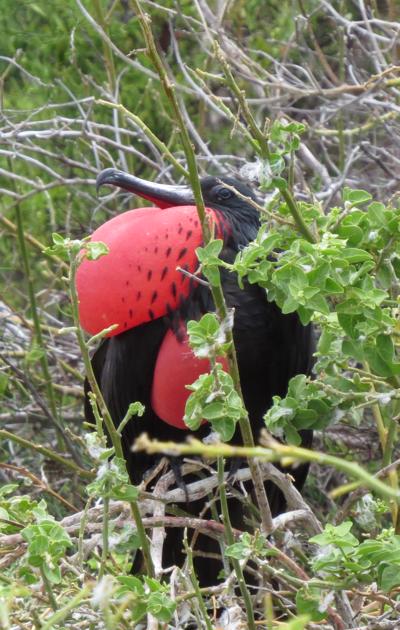
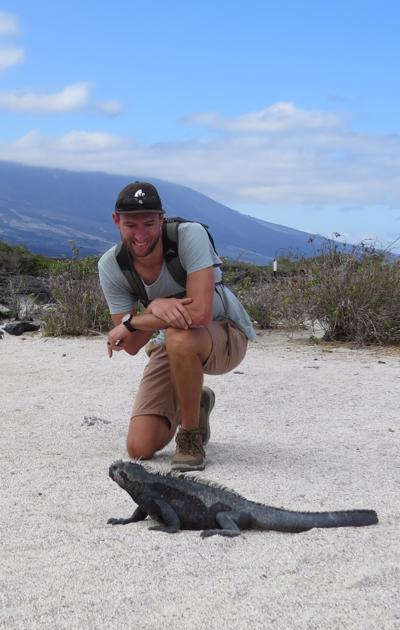
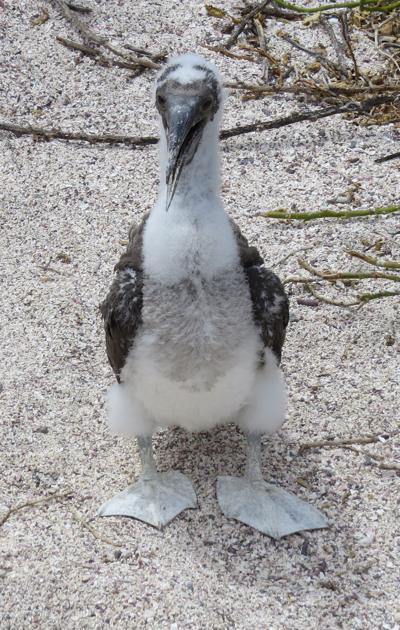
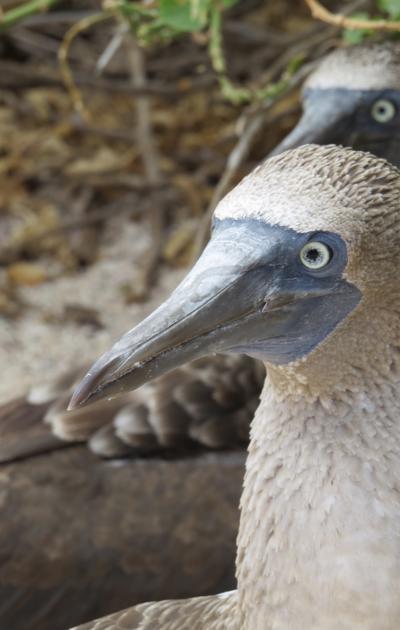
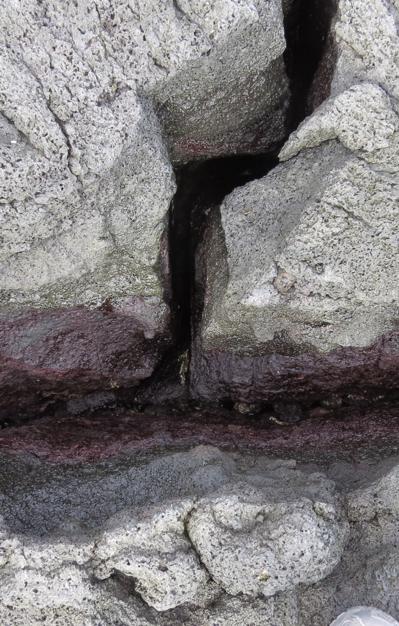
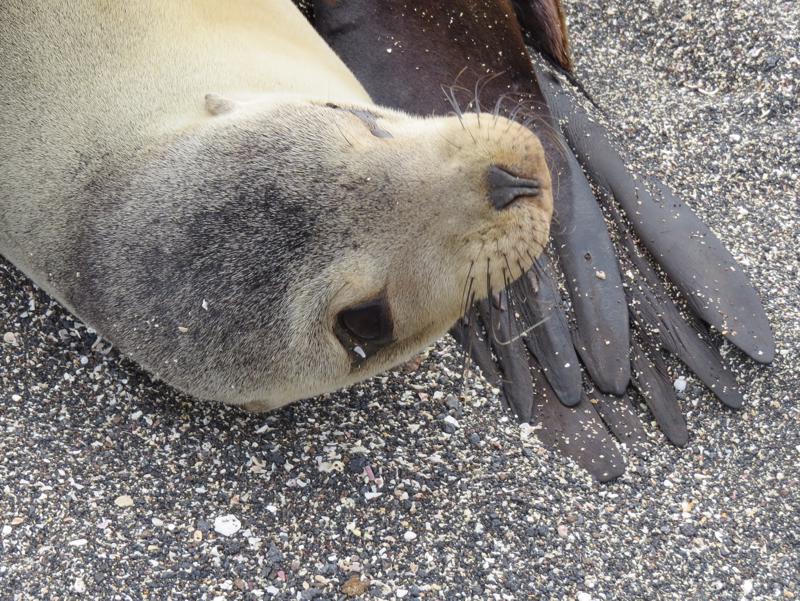
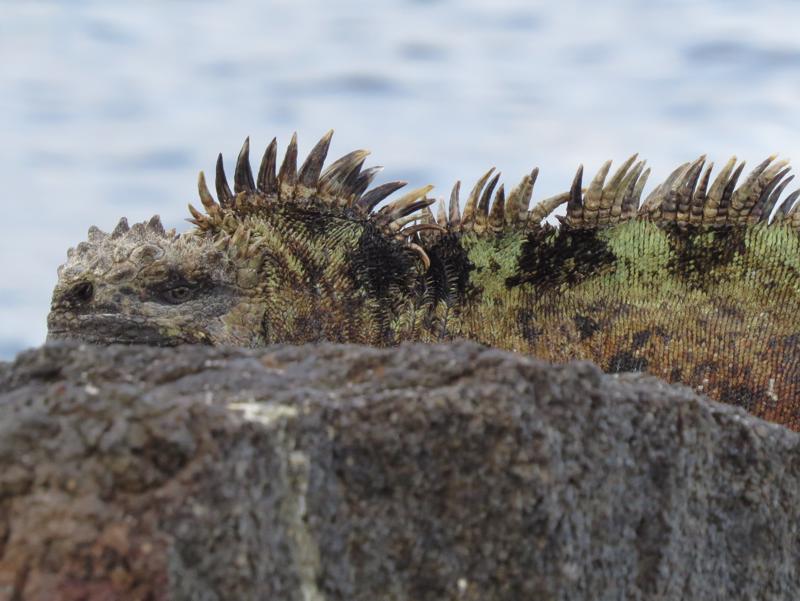
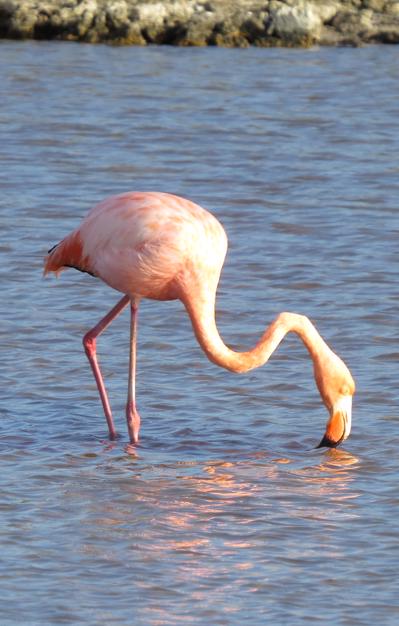
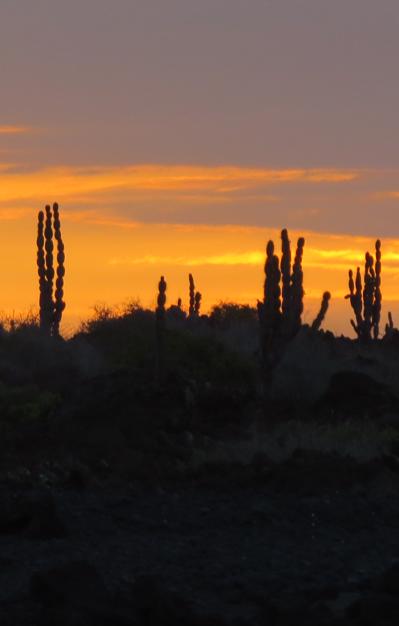
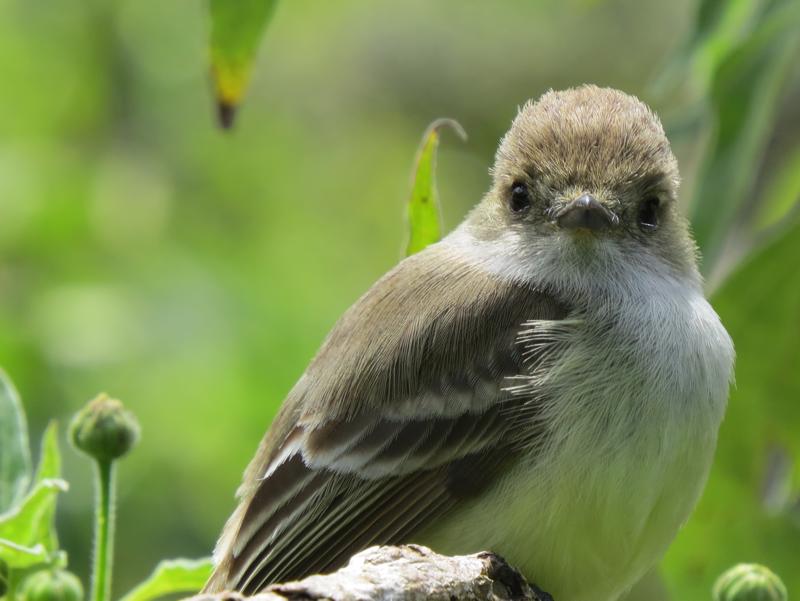
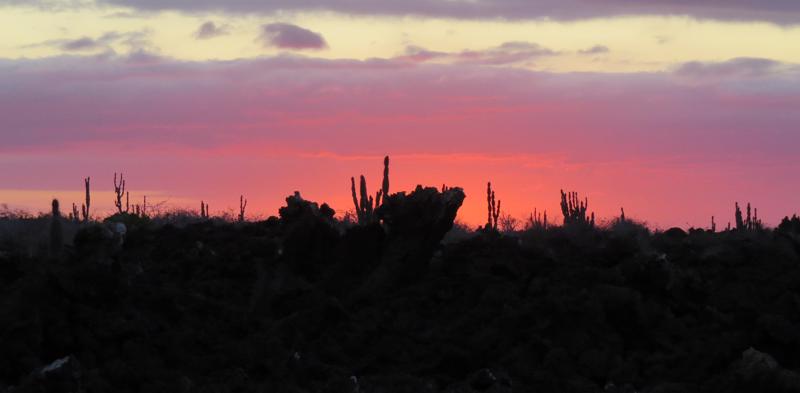


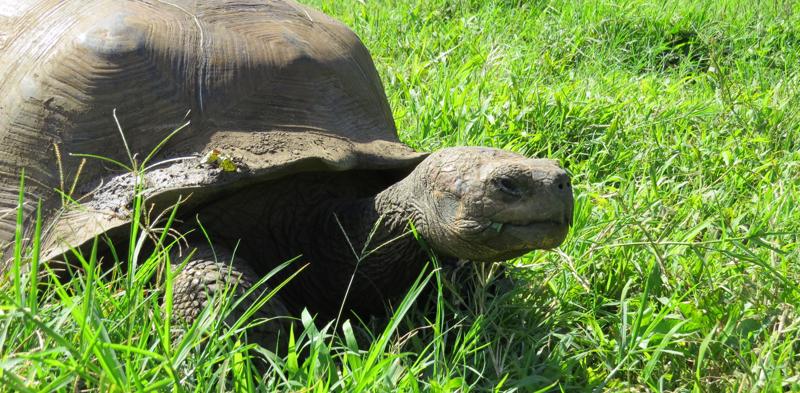
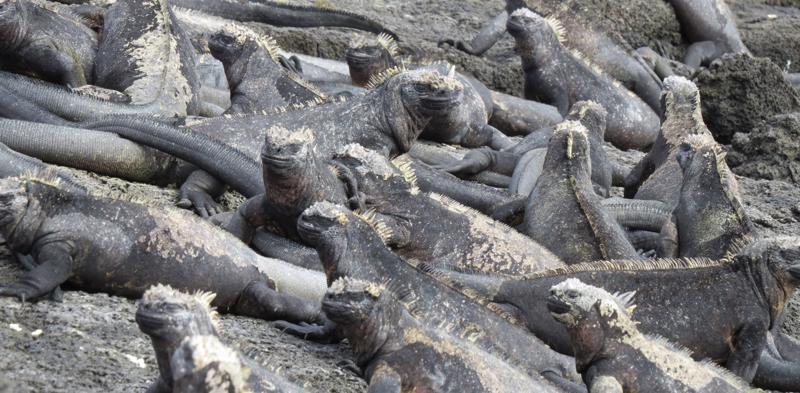
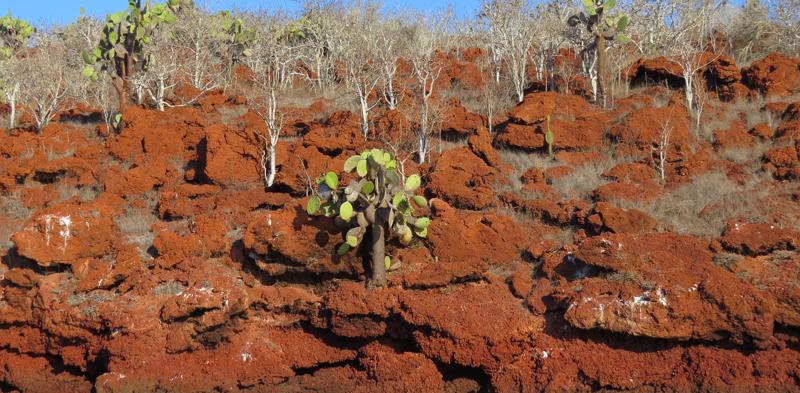
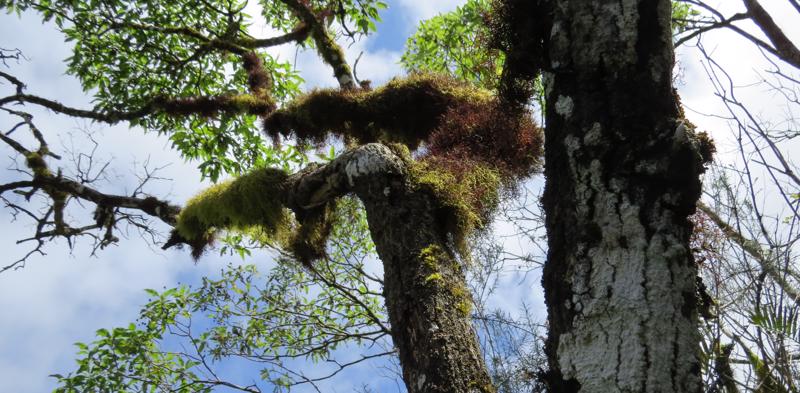
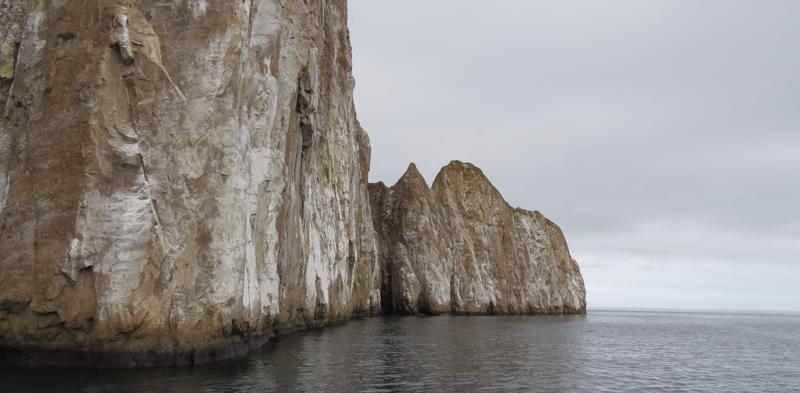
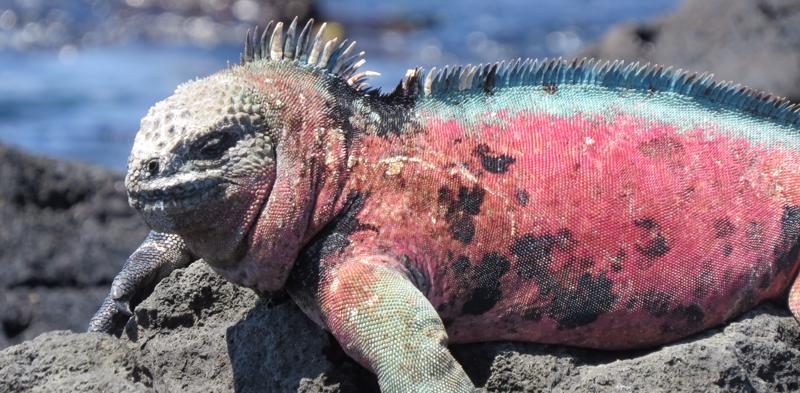
1.
The adventure ahead...
2.
In the beginning...
3.
And so the fun begins...
4.
Five Aussies in PDC...
5.
Lobster Galore...
6.
Grand Final ready...
7.
Killer Caves
8.
Unforgetable Antigua...
9.
Gettin' our locks off!
10.
We need a doctor...
11.
A stop over...
12.
An epic adventure...
13.
Oh, to fly like a bird
14.
A national gem...
15.
Moving forward...
16.
A fancy airport hotel
17.
Mr Attenborough did not lie, absolutely magical
18.
Like staying with family
19.
Amazing Amazon
20.
The Talent
21.
Markets, coffee and bagels
22.
All that flies
23.
Aussie Christmas in Cuenca
24.
Another hike, another detour
25.
On the road again... and again... and again
26.
The most breathtaking hike yet...
27.
A rainy hike with familar faces
28.
A giant unexplored city
29.
Functioning at new heights
30.
Hiking like the Inkas
31.
A necessary rest
32.
Living the floating island life
33.
The city of canyons and pizza
34.
Salt and Mirrors
35.
Tourists and atm lines
36.
Parks and wine
37.
We're not Hippies, we're Happies
38.
Super bowling
39.
Unexpected national park beauty
40.
Yep, thats right, we just climbed an ACTIVE volcano...
41.
The wrath of the I P A
42.
Our first taste of Patagonia
43.
El Chalten out of 10
44.
And that's just the tip of the iceberg...
45.
Don't cry for me Argentina
46.
Calling all travel gods...
47.
Marcia the Redeemer
48.
Reunited...
49.
Adventures with friends
50.
A hidden community with immense charm
51.
Beach bums
52.
The Final Four, what dreams are made of...
53.
Vegas baby
54.
The end of an epic adventure...
Share your travel adventures like this!
Create your own travel blog in one step
Share with friends and family to follow your journey
Easy set up, no technical knowledge needed and unlimited storage!